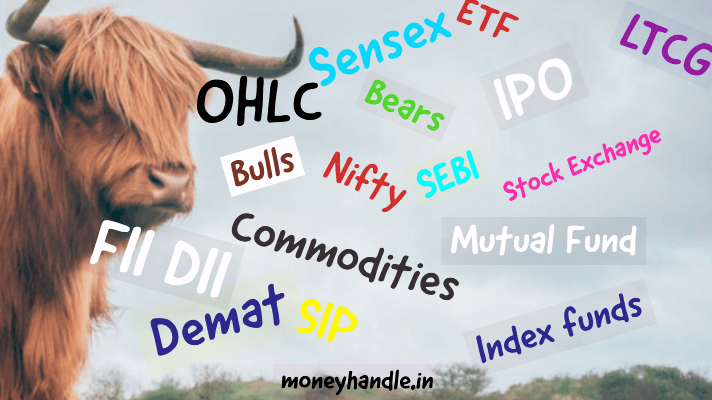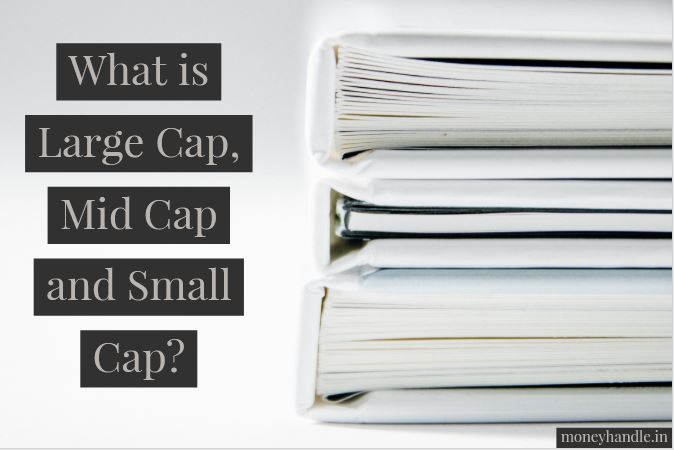
1. What is a Stock Market?
Stock market is just like any other market you can think of. Consider Amazon or Flipkart. They are online markets where sellers put up their products and us buyers buy them. Amazon or Flipkart are just intermediaries who keep a watch on these transactions so that transactions go on smoothly and honestly. They also ensure the satisfaction of buyers. Same is the case with stock markets where there are people willing to sell shares and people who are willing to buy. Stock exchange makes this buying and selling possible. Sellers list the number of shares and price of shares on the exchange. The Bombay Stock Exchange (BSE) and The National Stock Exchange (NSE) are the two biggest stock exchanges in India. BSE is Asia’s first stock exchange founded in 1875. NSE is newer and came into being in 1992.
2. What is Nifty and Sensex?
Perhaps the most popular terms of the stock markets that everybody talks about. Nifty and Sensex are the two biggest indices of NSE and BSE respectively. But wait, What the heck is an index? Hold on. An index is a group of companies listed on the exchanges. You can imagine it as an ultra-large company equivalent to all the companies it is made up of. Nifty is a group of the 50 largest companies listed on the NSE. Sensex is a group of the 30 largest companies listed on BSE. When we say a company is listed on an exchange, we mean it is available for buying or selling on that exchange. Since Nifty and Sensex are made of the largest companies, they are used for tracking the performance of the market as a whole.
3. What is a Bull Market?
In stock markets, bulls represent gains. Sometimes there is a lot of positivity in the markets and the price of every other share seems to be going up. In general, when major stock market indices such as nifty or Sensex are going up over a period of time, we say it is a bull market or the bulls have taken over the market. But even in bull markets, there are some shares whose prices go down and hence don’t think that bull markets means that each and every share will go up. Bull markets only represent the overall sentiment.
4. What the heck is a Bear Market?
In stock markets, bears represent losses. Sometimes there is a lot of negativity in the markets and the price of every other share seems to be going down. In general, when major stock market indices such as nifty or Sensex are going down over a period of time, we say it is a bear market or the bears have taken over the market. Remember that even in bear markets, most shares are down but some shares go up.
5. What is an IPO?
IPO is a short form for Initial Public Offering. Shares of a company are available for sale to the public for the first time via an IPO. A time range of a few days is declared during which prospective investors can place their bids. Bids can be placed only in the price range declared by the company in its Draft Red Herring Prospectus – a document containing detailed information about the company’s business and several other info. After bidding ends, shares are alloted to investors through a process called book building. For detailed information on IPO’s you may visit this link.
6. What is a Bourse?
7. Explain Mutual Funds
You can invest in the stock market directly by purchasing shares yourself or indirectly via mutual funds. A mutual fund is an investment product which tries to reduce the risk of losing money in stock markets by purchasing shares of multiple companies. Basically, a mutual fund is a collection of different stocks selected by the mutual fund manager who is an experienced professional. It is the headache of the fund manager to select good companies, keep track of their performances, buy them and sell them at appropriate times. When you buy a mutual fund, your money is used to buy shares of different companies in the fund portfolio. Mutual funds are targeted towards people with less inclination or time to study the markets.
To summarize, In a mutual fund-
- There is a mutual fund manager who selects multiple companies.
- The manager keeps track of the performance of companies in his portfolio.
- Buys and sells stocks at different times.
- There is less risk than buying individual stocks.
- You pay fees called expense ratio to the mutual fund company.
- There is no guarantee of returns and even losses can occur.
8. What are Index Funds?
An Index fund is a mutual fund which tries to replicate popular stock market indices by investing in companies present in the index and in the same proportion as the index. Nifty, Nifty Junior and Sensex are major Indian indices. Index funds are less risky than most mutual funds and their expense ratio (fund management fee) is substantially less than mutual funds. It is observed that over the long term, Index funds beat most of the mutual funds. They are called passively managed funds because the simply copy the index portfolio and the fund manager does not select the companies. Examples: SBI Nifty Index fund, HDFC Index fund – Sensex Plan, UTI Nifty Next 50 Index Fund.
9. What’s a SIP?
SIP is a short form for Systematic investment plan. It is not an investment product but a method or a plan of investing money at regular intervals instead of all at once. SIP removes the need for timing the market (finding the best time to invest). SIP uses the concept of rupee cost averaging which states that if you invest equal sums at regular intervals, the impact of short term fluctuations is reduced and you buy more when the market is cheap and less when it is expensive. However, SIP is not for everyone. Advances investors may not take the SIP route. Here is an article for a deeper perspective.
10. What is Fundamental and Technical Analysis?
Fundamental and technical analysis are two different approaches
11. What are Demat and Trading Accounts and why do I need them?
Before shares were electronically bought and sold online, physical paper certificates were issued to shareholders. But now, paper shares are not issued anymore and are de-materialized (converted to electronic form), hence the name
12. What is this LTCG?
The Long term capital gains tax is a 10% tax imposed on your profits above Rs 1 lac earned by selling securities (shares or other market products) if such products are sold after 1 year or more from the date of purchase. For example, if you buy some shares of a company and sell them 13 months after buying them, making a profit of Rs one lac and fifty thousand, then 10% on Rs 50,000, which is Rs 5000 will be paid as LTCG tax when you file your income tax return (remember the tax is on whatever profit you earned above Rs 1 lac).
13. Who is SEBI?
The Securities and Exchange Board of India is a statutory body empowered by the government to supervise and regulate the securities market in India. It acts as a watchdog and ensures that the rights of investors do
14. What is Market Cap?
Market capitalization is simply the sum total of the price of all the shares of a company at any given time. Needless to say, market capitalization varies with the price of shares. It can be calculated by multiplying the total number of outstanding shares by the current market price (CMP) of the share.
15. What is OHLC?
Open high low close popularly known as OHLC refers to the different price of a share on a day. Open (O) refers to the opening price of the share on a particular day. The opening price is the price at which the first transaction is made. High (H) refers to the highest price the share touches during a trading day. Low (L) refers to the lowest price at which the share was traded. Close (C) refers to the closing price or the price at which the share was last sold. OHLC charts are used in technical analysis by traders. Japanese candlesticks, which are a useful tool for tracking share prices represent OHLC.
16. Now what is this ETF thing?
Exchange-traded funds are like index funds but the difference is that they can be bought and sold on the stock exchange just like shares. Unlike index funds, you can sell them any time you want during market hours. ETFs tracking the Gold price are also available. Some common ETFs are SBI – ETF Sensex, UTI Gold Exchange Traded Fund, Reliance ETF PSU Bank BeES. You should have a Demat and a trading account to buy and sell ETFs.
17. FII, DII : Who the hell are these guys?
Foreign institutional investors (FII) are investors/investment groups that invest money in the Indian stock markets but are not registered in India. Examples of FIIs can be Mutual funds, insurance companies, etc. Similarly, Domestic institutional investors or DIIs are local investment houses which invest in the Indian markets. Examples of DIIs can be Reliance Capital, SBI Mutual funds, EPFO, etc.
FIIs and DIIs are important to gauge the sentiment of the market. When FIIs are buying, the economic outlook is positive and vice versa.
18. Futures??
A Futures Contract is an instrument for people who are sure they can judge the price movement of an asset (such as gold, silver, or stocks) in the future. We call it a contract because you have to fulfill your promise, i.e. you are bound to honor the contract.
Suppose the present price of gold is Rs 30,000 per 10 grams. You have reasons to believe that it will go up. However, not everyone in the country thinks like you. There will be people you will think that gold will go down. If you are very much certain, you may buy a futures contract for gold from an exchange. Essentially, what happens is that on the expiry date of the contract, if the price of gold is higher, you will make a profit and vice versa.
19. What’s a Commodities market?
A commodities market is where commodities such as gold, silver, oil, pulses, nickel, lead, cotton, gas, Cardamom, and Pepper are traded online. It is a risky market where you bet on the price of these commodities hoping to earn a profit. If you are a beginner, you should study in detail before thinking about trading in commodities To learn in-depth, click here.
20. What is 52 week High/Low?
One year has 52 weeks. Now you must have understood what is 52
Conclusion
There is no conclusion. Just keep reading and reading before you feel confident enough to start investing. Please let me know if there’s anything you could not understand and your comments and suggestions are welcome, as always! See you next time.





